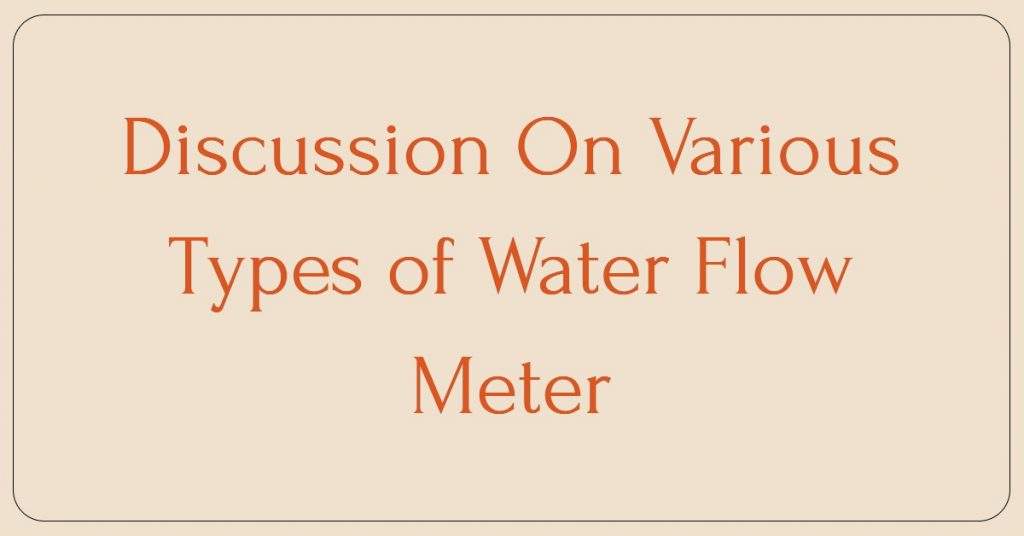
Discussion On Various Types of Water Flow Meter

Water flow meters are devices that measure the amount of water consumption in a house. These are typically installed in pipelines, as well as on faucets and individual taps. The flow is measured by attaching a measuring device to the pipeline, a pipe, or a separate tap. This device can be either mechanical or electronic, and changes often depend on installation and accuracy requirements.
Different types of flow meters can measure the consumption in a typical installation of water meters. Read below for more information.
1) Single-Wheel Water Meter
One of the earliest devices for measuring water consumption in a home is the water meter. The device has measured water since nearly 400 BC when measured using a float and buckets system. The device is still used
in some places where no other devices are available.
The single-wheel water meter operates on the simple principle of measuring the amount of water that flows through a pipe by attaching a wheel at one end. This wheel turns as liquid flows through the line. A recording device measures and records the wheel’s rotation, which usually begins immediately when water flow starts in your home.
2) Water Meter That Accumulates
The second type of water meter, like the single-wheel meter, operates on a simple principle. This meter, on the other hand, collects flows in separate compartments of the water meter. A single wheel or paddle for each room makes it easier to identify and quantify different flows.
The accumulative meter is more accurate than single-wheel water meters, which can measure many liters of water with a single wheel rotation. As a result, the accuracy is higher, particularly when compared to float and bucket systems, which required multiple calibrations.
3) Fuse-Wire Meter
The third type of water meter is made of a fuse wire whose length changes as the liquid passes through it. The wire makes contact with an electrical device, and the position of the contacts indicates how much water has passed through it. The device operates on a primary electrical circuit, with the current flow determined by the length of the fuse wire.
This type of water meter is widely used in the United Kingdom, Ireland, Australia, and some other parts of Asia. The device calculates water consumption based on time intervals rather than actual volume. This means that, unlike different types of measurement, you will have to wait several hours before you can get an exact estimate of how much water has flowed through the pipe.
4) Water Meter with Disk System and Gear Wheel
This is a popular type of water meter in Europe and some parts of Asia. The gear wheel device is attached to the top of a pipe and operates on the angular movement principle. The gear wheel is connected to a disc, which rotates as water passes through it.
Once the flow has stopped, an operator can read the rotating parts using optical or mechanical reading systems. This means that, unlike other water meters, this one provides accurate and recorded water consumption measurements rather than real-time measurements.
5) Water Meter with Strain Gauge
The strain gauge is a meter that provides real-time flow measurement and instantaneous data about the amount of water used. The device works using an electrical circuit where the length of the metal wire changes when it passes through different amounts of water.
This type of water flow meter is often used as a companion to other types of water meters in homes where several flows are monitored using separate devices at one time. The strain gauge provides accurate data on the total amount that has been consumed as well as on the flow rate for each type of water stream.
Summary
The above discussion on various water flow meters was meant to introduce the different kinds of water meters available for your use. Also included are some practical ways to deal with procrastination from the three types of obstacles that might be affecting you.